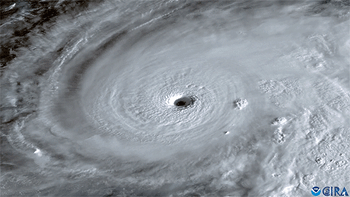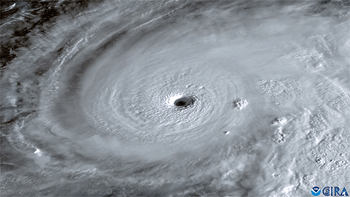
Hurricane Melissa made landfall in Jamaica as a catastrophic Category 5 storm, the strongest to lash the island since recordkeeping began 174 years ago.
The storm’s eyewall entered near New Hope in southwestern Jamaica is expected slice diagonally across the island, exiting around St. Ann parish in the north, forecasters said. It had maximum sustained winds of 185 mph.
Earlier Tuesday, the National Hurricane Center in Miami said Melissa was still gaining strength as it approached the island, and warned “total structural failure is possible near the path of Melissa’s center.”
“This is an extremely dangerous and a life-threatening situation. Take cover now! Failure to adequately shelter may result in serious injury, and loss of life. Residents in the Jamaica should not leave their shelter as winds will rapidly increase within the backside of the eyewall of Melissa,” the NHC said in a 10 a.m. ET advisory.
Hours before the storm, the government said it had done all it could to prepare as it warned of catastrophic damage.
“There is no infrastructure in the region that can withstand a Category 5,” Prime Minister Andrew Holness said. “The question now is the speed of recovery. That’s the challenge.”
Landslides, fallen trees and numerous power outages were reported ahead of the storm, with officials in Jamaica cautioning that the cleanup and damage assessment would be slow.
A life-threatening storm surge of up to 13 feet (4 meters) is expected across southern Jamaica, with officials concerned about the impact on some hospitals along the coastline. Health Minister Christopher Tufton said some patients were relocated from the ground floor to the second floor, “and (we) hope that will suffice for any surge that will take place.”
The storm already was blamed for seven deaths in the Caribbean, including three in Jamaica, three in Haiti and one in the Dominican Republic, where another person remains missing.
A U.S. Air Force Reserve crew captured a rare view inside the eye of Category 5 Hurricane Melissa during a research flight.
Jamaica braces for catastrophic damage
Melissa’s barometric pressure — a measure of a storm’s strength, with the lower the pressure indicating a stronger and more dangerous storm — is the strongest ever recorded so late in the Atlantic hurricane season, according to NBC Miami meteorologist John Morales. At 6 a.m. ET, Melissa was at 901 millibars. Three hours later, the NHC advised it had dropped to 896 millibars, making the storm stronger than hurricanes Katrina and Milton. By 10 a.m. ET, the storm reached 892 millibars.
‘Oh my Jesus Christ,” a stunned Morales reacted upon learning of the update live on-air.
Colin Bogle, a Mercy Corps advisor based near Kingston, said most families are sheltering in place despite the government ordering evacuations in flood-prone communities.
“Many have never experienced anything like this before, and the uncertainty is frightening,” he said. “There is profound fear of losing homes and livelihoods, of injury, and of displacement.”
Matthew Samuda, Jamaica’s water and environment minister, said he had more than 50 generators available to deploy after the storm, but warned people to set aside clean water and use it sparingly.
“Every drop will count,” he said.
Hurricane Melissa is a Category 5 storm, the strongest ever recorded so late in the season.
Melissa takes aim at Cuba and Bahamas
Melissa also was expected to make landfall in eastern Cuba late Tuesday as a powerful hurricane.
A hurricane warning was in effect for Granma, Santiago de Cuba, Guantánamo and Holguin provinces, while a tropical storm warning was in effect for Las Tunas. Up to 20 inches (51 centimeters) of rain were forecast for parts of Cuba, along with a significant storm surge along the coast.
Cuban officials said Monday that they were evacuating more than 600,000 people from the region, including Santiago, the island’s second-largest city.
Melissa also has drenched the southern regions of Haiti and the Dominican Republic, with a tropical storm warning still in effect for Haiti.
The hurricane was forecast to turn northeast after Cuba and strike the southeast Bahamas by Wednesday evening.
Bahamian officials issued mandatory evacuation orders for residents living in several areas in the Caribbean nation.
The Disaster Risk Management Authority, the country’s agency for managing natural disasters, said in a Tuesday afternoon news release that residents of Acklins, Crooked Island, and Long Kay, Inagua, Mayaguana, and Ragged Island should evacuate immediately.
“Residents of the islands listed in the official Evacuation Order are urged to evacuate immediately,” the agency said. “If you choose not to evacuate, please note that assistance will not be available until the All-Clear is issued.”
A hurricane warning was in effect for the southeastern and central Bahamas, and a tropical storm warning was issued for the Turks and Caicos Islands.

Allison Craig is a passionate sports writer and analyst with a deep love for game strategies, player performances, and the latest trends in the sports world. With years of experience covering football, basketball, tennis, and more, she delivers insightful analysis and engaging content for sports enthusiasts.


No responses yet